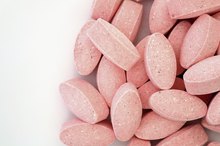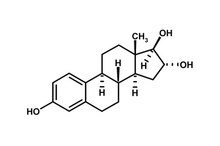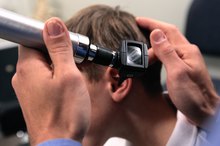The Major Importance of Hydrogen in Living Organisms
As different as each living organism may appear to be on the surface, all life is made up of basically the same molecules at the core. These molecules are formed by the way in which carbon, hydrogen, oxygen and other elements bond together. Hydrogen, which is the same element that makes up gas clouds and huge stars, also plays an important role in the composition of life.
Definition
Hydrogen is the simplest and most abundant element in the entire universe 3. According to astrophysicist David Palmer, about 75 percent of all the known elemental matter that exists is composed of hydrogen. The nucleus of a hydrogen atom is made out of a single proton, which is a positively charged particle. One electron orbits around the outside of the nucleus. Neutrons, which can be found in all other elements, do not exist in the most common form of hydrogen.
- Hydrogen is the simplest and most abundant element in the entire universe 3.
- The nucleus of a hydrogen atom is made out of a single proton, which is a positively charged particle.
Elemental Bonds
Foods Containing Carbon
Learn More
In living organisms, carbon and hydrogen make easy partners. The element carbon has two orbiting layers, called shells, surrounding its nucleus. The outer shell contains four electrons. These four electrons can form separate covalent bonds with other elements, which means that they bond together by sharing electrons. Hydrogen has only electron to share, so it can bond only once, but up to four hydrogen atoms can bond to one carbon atom. However, hydrogen has some unique properties. Sometimes it shares electrons unequally with an electronegative atom, such as oxygen or nitrogen. When this happens, hydrogen develops a slight positive charge, which attracts other negatively charged particles. Because opposites attract, they bond together without sharing electrons. This is called a hydrogen bond. They are weak but useful in living organisms for forming short-lived and easy connections.
- In living organisms, carbon and hydrogen make easy partners.
- These four electrons can form separate covalent bonds with other elements, which means that they bond together by sharing electrons.
Organic Molecules
The way in which carbon bonds to hydrogen, as well as other elements, such as:
- oxygen
- phosphorus
- is called an organic molecule
- which is a fundamental molecule that constitutes all life
Carbon is ultimately the cornerstone for life because its bonding patterns create complex structures that fold, bend, chain together or form rings. Carbon and hydrogen atoms are so prevalent in living organisms that there are molecules called hydrocarbons that are made up almost entirely of carbon and hydrogen.
Macromolecules
What Elements Are in Vitamins?
Learn More
Think of the winding double helix of DNA. This molecule is composed of two twisting strands bound together by hydrogen bonds. When DNA needs to unwind so that it can be read, the weak hydrogen bonds are broken. In carbohydrates, however, hydrogen atoms actually act as placeholders. Once the hydrogen is removed, two sugars bond together and form long repeating chains of a strongly linked unit. This also holds true for many fatty lipids and proteins.
- Think of the winding double helix of DNA.
- Once the hydrogen is removed, two sugars bond together and form long repeating chains of a strongly linked unit.
Significance
Besides acting as an important structural element, hydrogen has a hand in nearly every single physiological function of living organisms due to its usefulness and abundance. In the task of digestion, hydrogen bonds with chlorine to form hydrochloric acid, which breaks down fat and protein in the stomach 2. In the task of aerobic respiration, the movement of free-floating hydrogen atoms helps stimulate the production of energy; this is similar to the way in which a water pump can create energy potential that can do work. Next to carbon, there is probably no other element used quite so often and for so many important functions.
- Besides acting as an important structural element, hydrogen has a hand in nearly every single physiological function of living organisms due to its usefulness and abundance.
- In the task of aerobic respiration, the movement of free-floating hydrogen atoms helps stimulate the production of energy; this is similar to the way in which a water pump can create energy potential that can do work.









